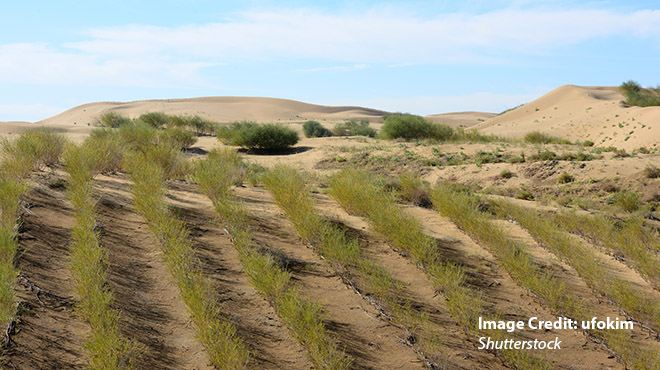China’s Afforestation Efforts: Not Seeing the Forest for the Trees?

In June 2020 Beijing announced a 15-year ecological protection plan, part of a wider drive in China to press ahead with nation-wide environmental protection ambitions. Maintaining and expanding the country’s forest coverage has been a concern for policymakers. It is evident that the Chinese government is determined to follow through with its environmental policy aspirations, already going so far as to deploy the People’s Liberation Army (PLA) to support tree planting efforts.
The campaign to plant large swathes of forest is in part motivated by a desire to tackle air pollution, a major concern in densely populated urban centers, as well as mitigate the effects of global climate change and meet the country’s targets on reducing carbon emissions. In 2018, the Chinese government reaffirmed plans to increase national forest coverage from 21,7 percent to 23 percent by 2020. While this might seem like a minor difference, the area set aside for forestation in 2018 amounted to over 7 million hectares, roughly the land area of Belgium and the Netherlands combined.
In recent decades, China has had to carefully manage land usage, balancing the need to maintain enough arable land to feed the world’s largest national population against industrial development and the growth of sprawling urban centers. As global climate change becomes more palpable, it is hardly surprising that Beijing seeks to maintain and adapt its decades old policy combatting and reversing desertification.
A Great Green Wall
Since the inception of the PRC there have been efforts to use tree planting to improve the livelihoods of rural communities. In 1978, as part of the Reform era, Beijing initiated a major campaign to slow desertification and halt the expansion of the Gobi Desert. Known as the “Three Norths Shelterbelt,” the project is one of the world’s largest afforestation efforts and consists of a series of tree plantations stretching in a vast arc across Northern China with a planned completion date of 2050. President Xi Jinping has come out as a strong advocate of a nationwide tree planting drive in national media, even taking part in tree planting efforts himself.
Afforestation efforts are not limited to northern China, though it is in this region that the Chinese government has expended immense human and financial resources to reverse environmental degradation. And there is good reason to keep a close watch on woodland management. In 1987, a massive forest fire began in Daxing’anling prefecture in Heilongjiang province, along the Northeastern edge of the Three Norths Shelterbelt devastating a vast swathe of territory and raging for nearly a month. Some 200 people lost their lives in the first hours of the firestorm and thousands were left homeless. The regional government has since then been on guard with specially trained personnel to prevent forest fires of a similar scale.
Mixed Impact Worth Improving
The efforts to build a great green wall to protect the Chinese heartland from sandstorms and desertification are by no means a panacea. In fact, current afforestation policy emphasizes quantity rather than quality. While the central government is keen to promote the positive effect millions of newly planted trees will have on the environment, this rhetoric fails to recognize the downsides of a heavy-handed approach. A large proportion of the tree seeds planted have not rooted, which not only diminishes return on investment, but simultaneously negates the potentially positive environmental impact. This is further impeded by planting non-native tree species, overplanting, and consequently water shortages.
The adamant reliance on planting monoculture to restore natural forest coverage has been linked to a loss in biodiversity in the long run. Studies have suggested that investing in preserving natural forests, or allowing deforested areas to regrow without human intervention, can have a much more positive affect on biodiversity. While plantations of native and non-native tree species might help reduce carbon dioxide and slow desertification, they do not offer long-term perspectives for wildlife to return.
The central government’s afforestation strategy is subject to a balancing act between short-term goals and long-term impacts. For as long as the underlying causes, including pollution, climate change, and poor natural resource management, continue to harm China’s natural environment, planting trees may do more harm than good. Unless the authorities actively start preserving natural woodlands and developing ecologically sustainable planting strategies involving native species, large-scale projects such as the Three Norths Shelterbelt initiative will not be able to maximise environmental protection.